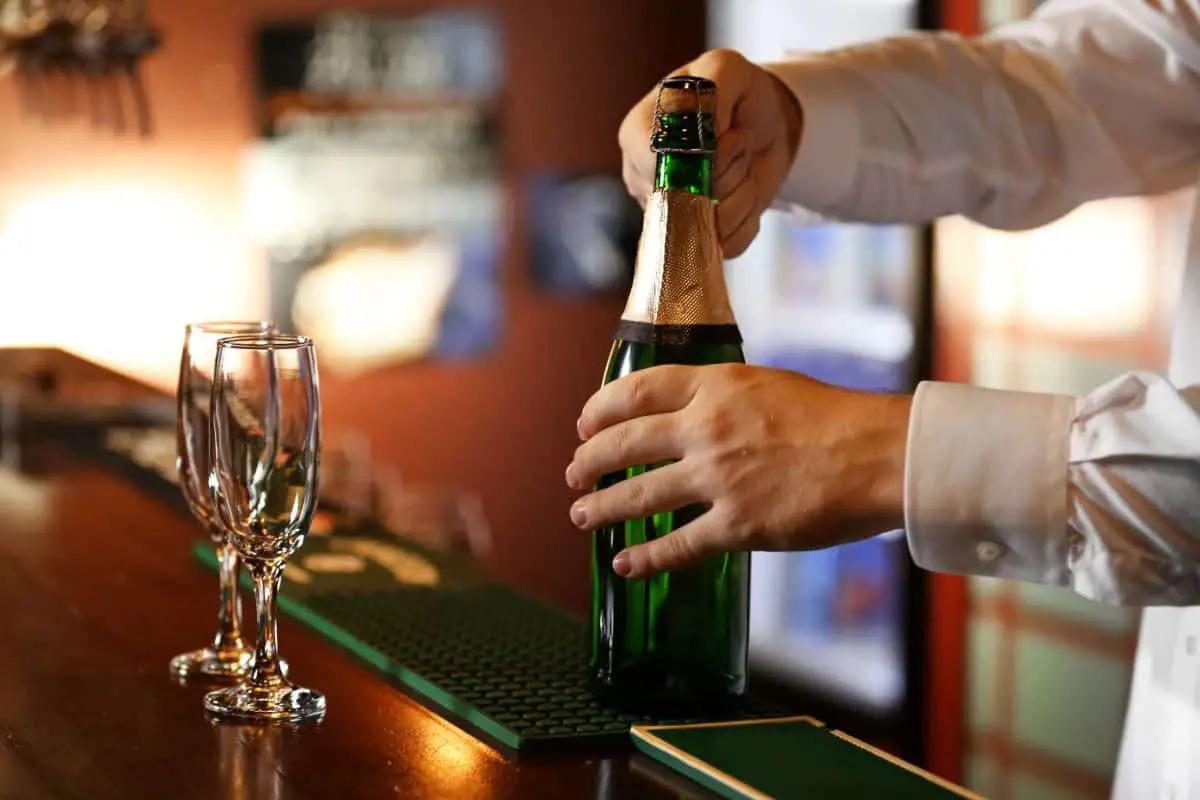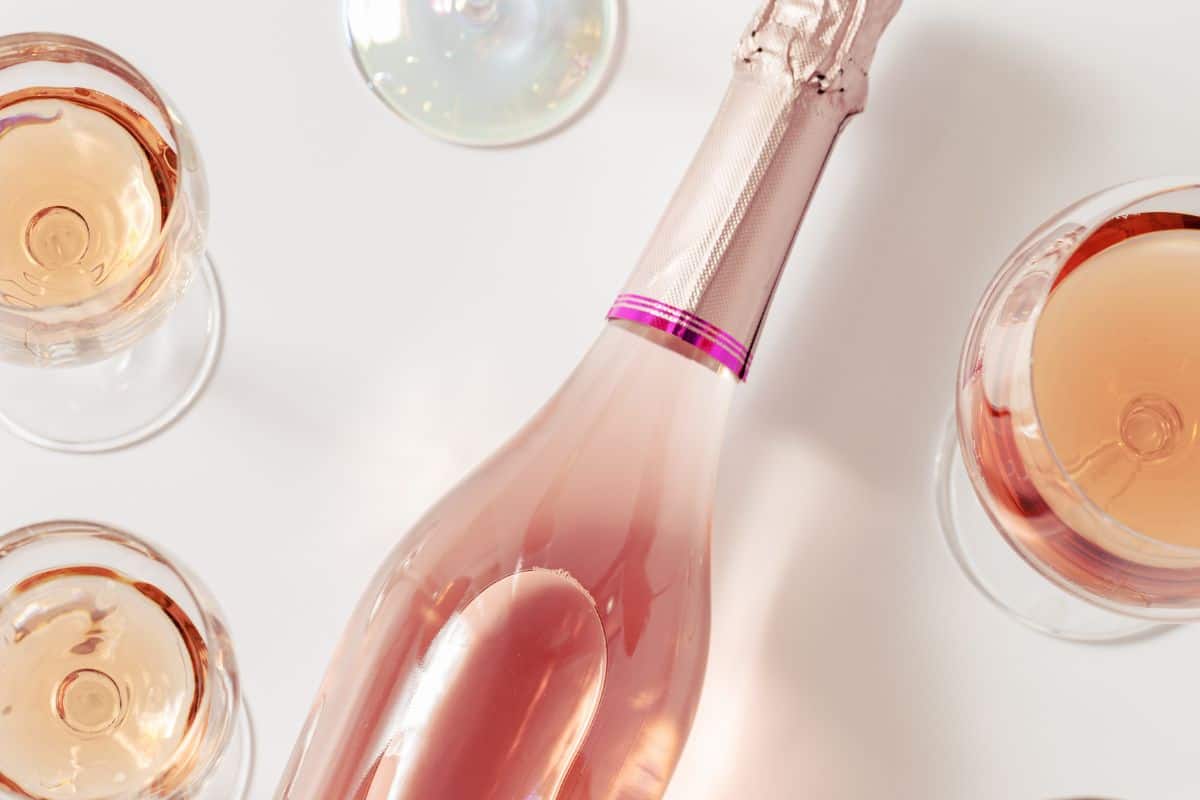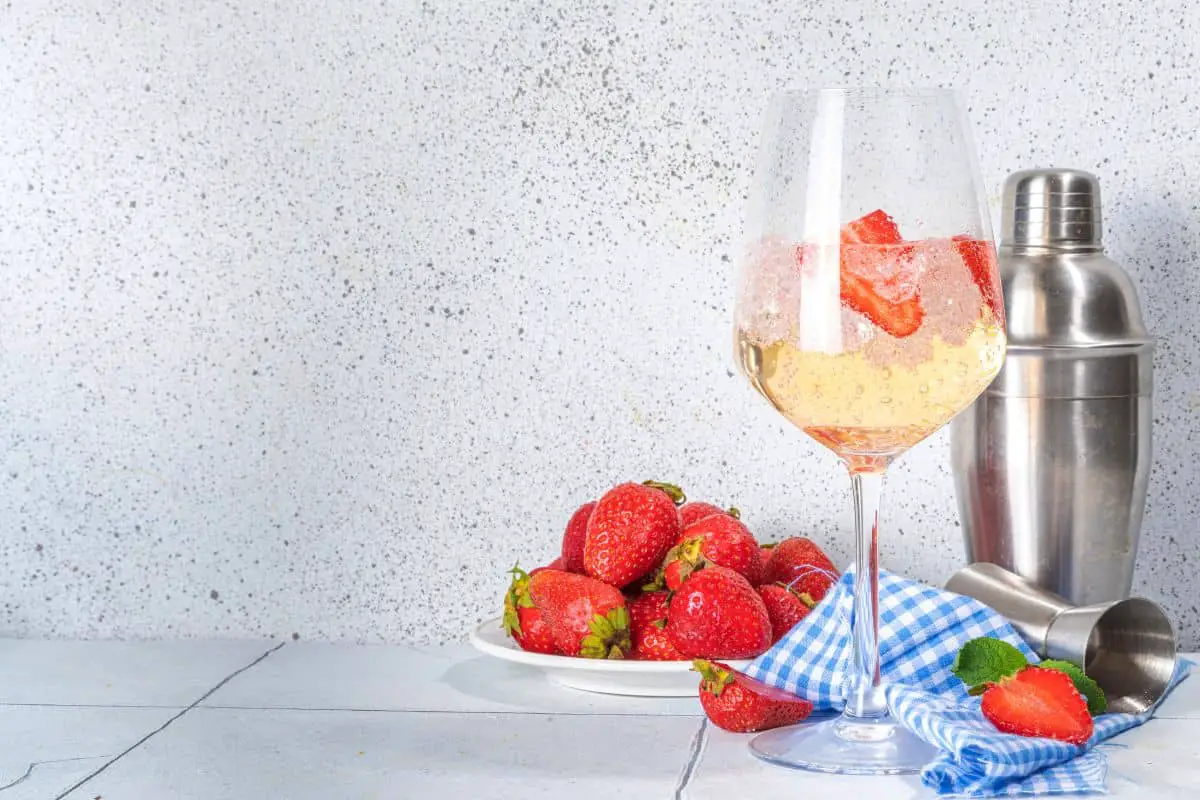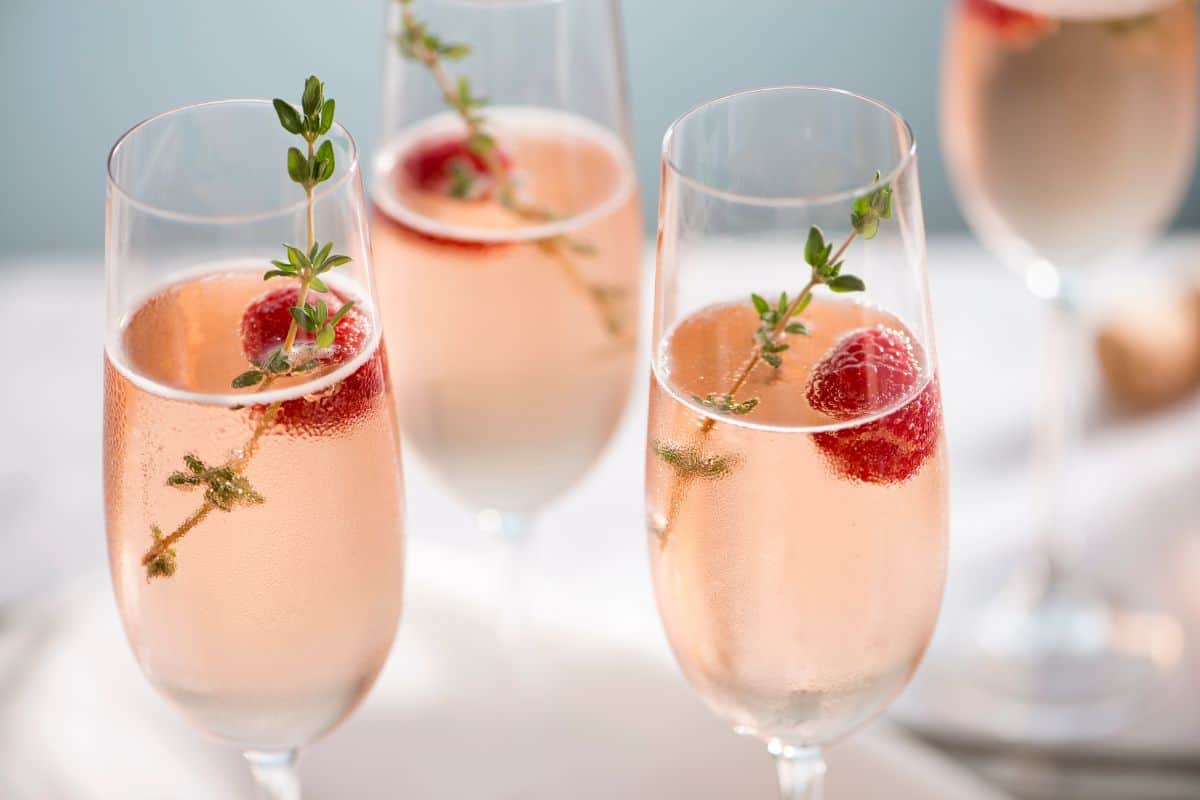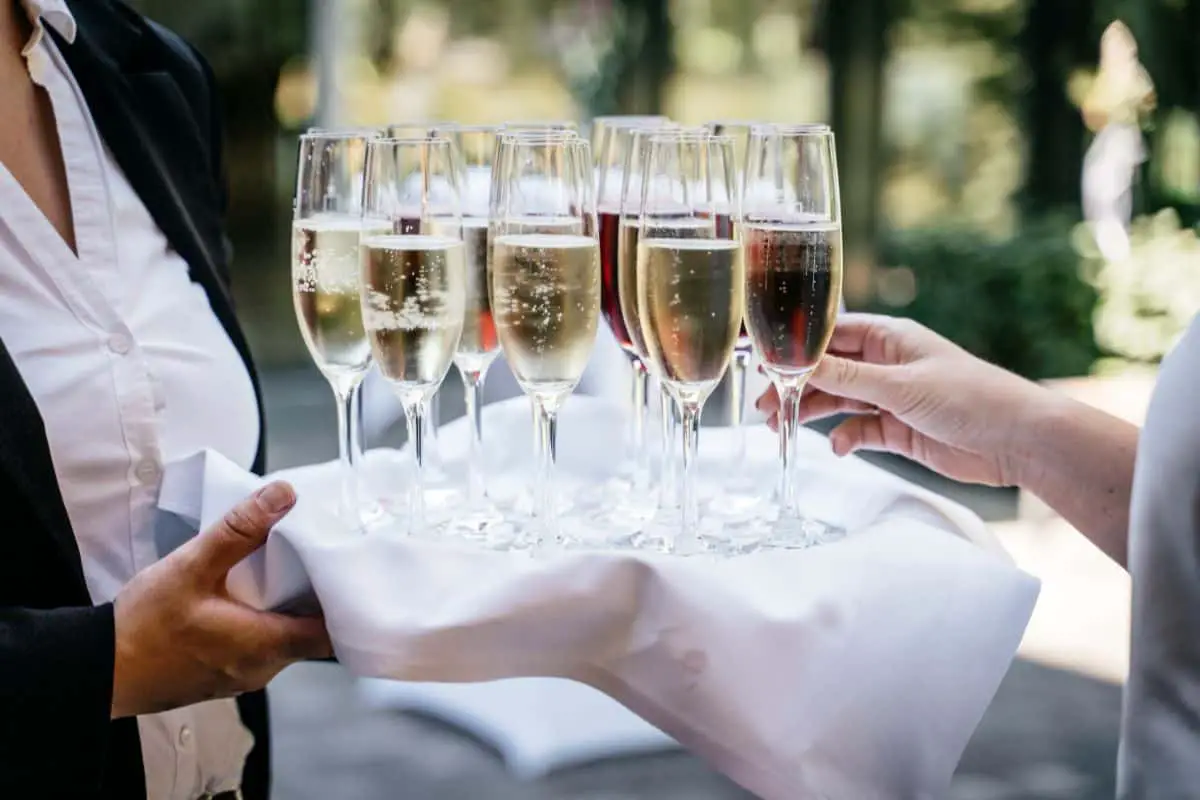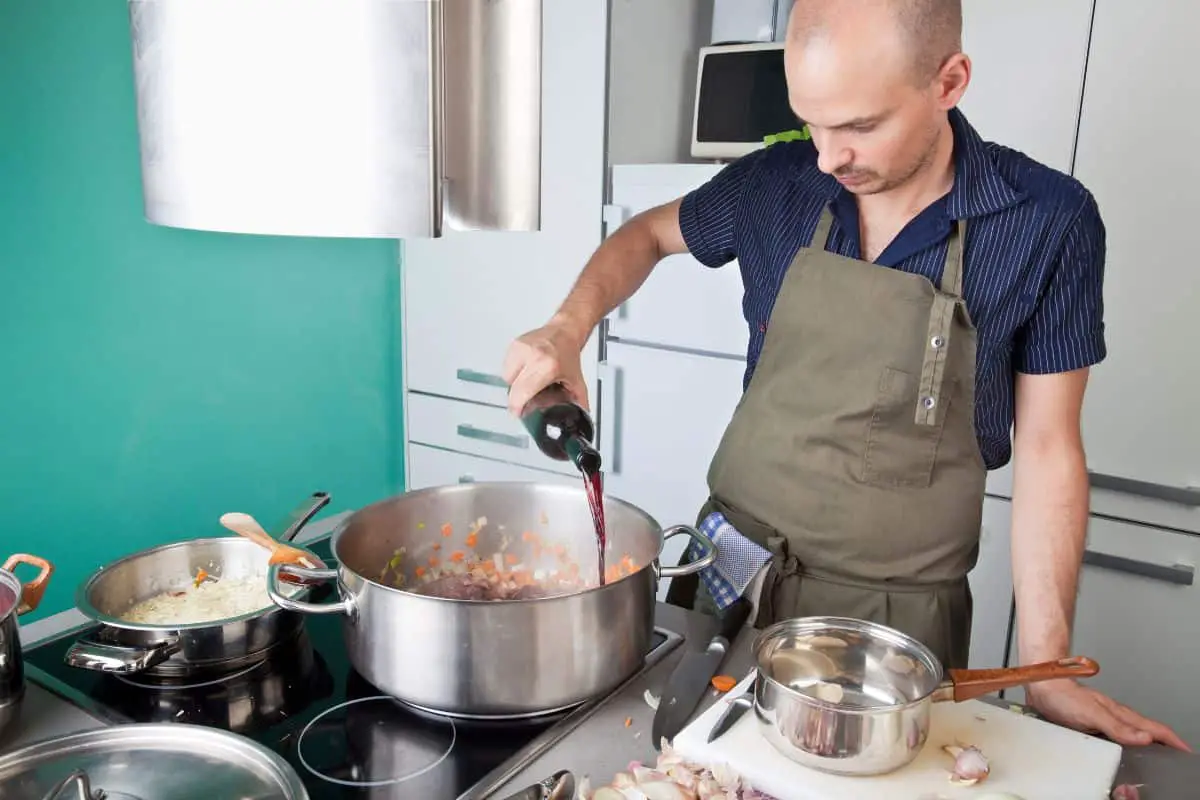The ease of the mimosa is just one of the reasons it’s become such a popular brunch cocktail. Combining decadent champagne with traditional morning orange juice, the mimosa is a fun and playful drink that requires very little effort to get right.
If you’re planning a celebratory breakfast or a bottomless brunch, then you need the right champagne for your mimosas. But don’t stress the choice!
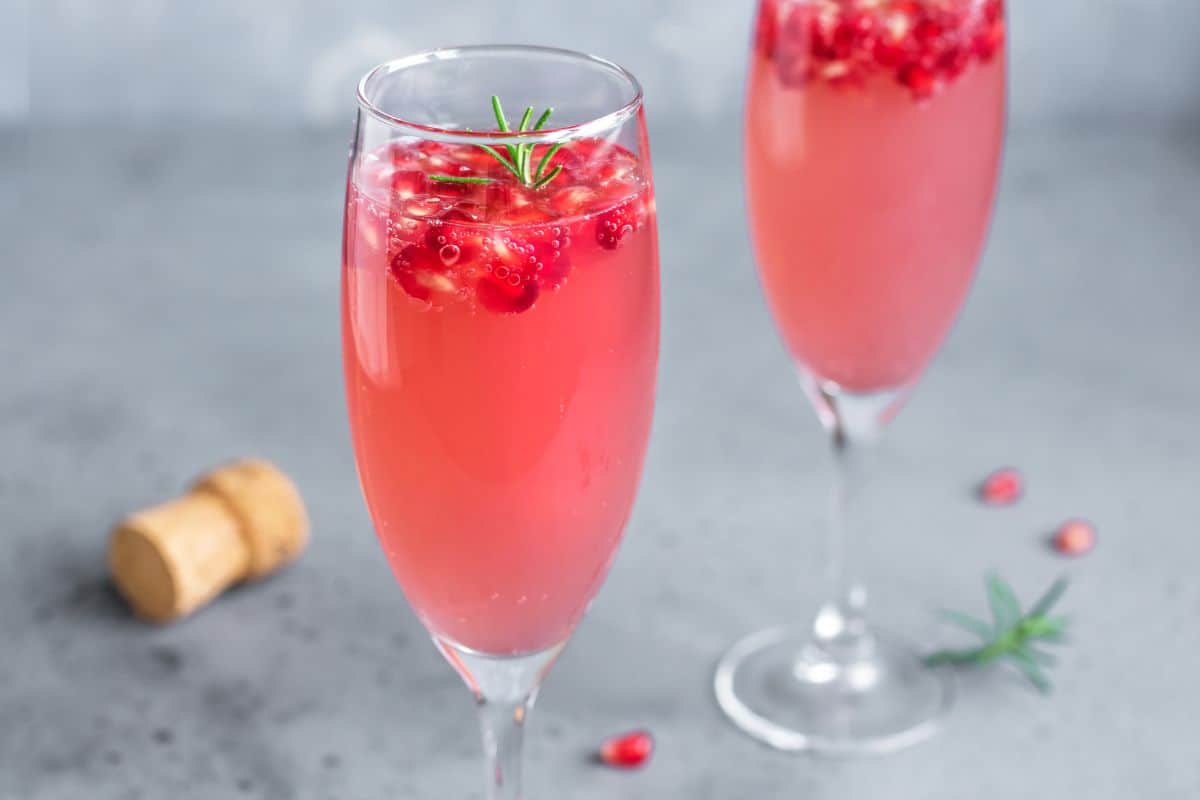
A mimosa is adaptable and forgiving. The key thing to remember is to look for the dry finish of a Brut, and don’t be afraid to play with the balance.
In this guide, we’ve picked our five favorite champagnes for mimosas. These choices are so good, you’ll want to pop the cork just to celebrate your good taste! Read on to find the best champagne to make the perfect mimosa.
THE CLASSIC CHOICE
Veuve Clicquot Yellow Label is an icon of the champagne world. That dark green bottle, contrasted with the splash of gold from the label — for many of us, it’s synonymous with the word champagne.
If you want to show your guests you know your champagne, and you know how to make a good mimosa, there is no better choice.
Veuve Clicquot is an elegant choice, and a classic for a reason.
The traditional champagne balances initial fruity notes with a depth of cream and slight touches of vanilla.
It has enough structure to support the orange juice, without the richness of some champagnes that can overwhelm a mimosa.
The brightness of taste is perfect in a mimosa for any occasion, but the impeccable flavor balance is ideal when you really have something to celebrate.
With an initial burst of freshness tempered by a lingering honey sweetness, this champagne makes a mimosa to be savored. And thanks to the quality, you can enjoy Veuve Clicquot long after the orange juice has run out.
Pros
Structure - Veuve Clicquot is a champagne that works with, rather than against, the mixer.
Classic - It’s a classic choice for a very good reason.
Fruity - Ideal for mimosas.
Cons
Expensive - An elegant choice, but not a cheap one.
Also available for purchase from Drizly and Reserve Bar.
RUNNER-UP
Starting rich and finishing fresh, Nicolas Feuillatte Brut Reserve Champagne creates a different take on the classic mimosa. Notes of spice and fruit combine with a honey sweetness, but cutting through it all is a dash of citrus.
This is a mimosa with sophistication, but still enough of a crowd pleaser to appeal to a large audience.
Drawing from 150 cru villages, the Brut reserve Champagne is an exceptional expression of what Nicolas Feuillatte does best. Delicate without getting lost on the tongue, persistent bubbles add refreshment and sparkle.
There’s some power to the Nicolas Feuillatte which comes through in the complexity of taste, and the long-lasting finish.
The Nicolas Feuillatte lacks some of the elegance of the Veuve Clicquot, but this is still an excellent choice for a celebration. The combination of unusual spicing and clean acidity creates a mimosa which is sure to bring smiles.
You’ll be more than happy toasting with a Nicolas Feuillatte mimosa. Whether it’s a wedding day brunch, a honeymoon breakfast, or simply a celebration of good champagne! Good enough to drink alone, but exceptional in a mimosa.
Pros
Exuberant - A stream of bubbles adds some pop to your mimosa.
Spice notes - An unusual complexity that intrigues and delights.
Fresh finish - Brightens as it ends, for a lingering enjoyment.
Cons
Price - Not a choice for a budget brunch.
Also available for purchase from Reserve Bar and Total Wine.
BEST BUDGET
One of the best things about a mimosa is that you can create an exceptional, and classy, tipple without having to spend a fortune. Cava, prosecco, and sparkling wine all have their place in a mimosa.
But our top budget pick has to be Korbel Brut California Champagne.
So, what makes the Korbel good enough to stand amongst the Veuve Clicquots of the world? For a start, there’s the finish. As a Brut, Korbel has a dry finish.
This lifts the orange juice of a classic mimosa, giving a sophisticated edge that’s perfect for a brunch time cocktail, while remaining light enough to be a crowd pleaser.
In terms of flavor, Korbel Brut California Champagne keeps it classic. Citrus and cinnamon with a depth of vanilla melt into orange and lime, finishing with a creamy hint of strawberry.
It isn’t a flavor palette that inspires lots of thought, but one that you enjoy and share.
Finally, the Korbel Brut California Champagne has a light touch that pairs with brunch food. Enjoy as a contrast to a salty cheese croissant, or as a companion to a sticky cinnamon roll.
Mimosas are made for late breakfasts that morph into long lunches, and the Korbel can keep up with whatever might be on the menu.
Pros
Easy palate pleaser - Pair with whatever you plan on serving.
Lively - Citrus fruits add a sharp sweetness.
Price - An inexpensive choice that tastes expensive.
Cons
Light - Can get lost in a mimosa.
Also available for purchase from Drizly and Total Wine.
BEST ROSE
Take a break from the traditional and show your talent for flavor pairing with a fun take on the classic mimosa.
A rosé champagne can be used to make an exceptional mimosa, particularly if you choose a bottle as good as the Moet & Chandon Rosé Imperial Brut Champagne.
If you’re worried a rosé will be too sweet for a mimosa, this Moet & Chandon balances that with the dry finish of the Brut variety. You get all the freshness and vibrancy that a rosé has to bring, tempered by a finish that refreshes.
The taste comes through with a burst of juicy berry flavors, but with a floral elegance that adds romance. A slight hint of peppercorn brings another layer to the overall flavor, with a pinch of spice to balance out the sweetness.
A charming rosé that tastes like a celebration all on its own, Moet & Chandon Rosé Imperial Brut Champagne goes with intense flavors for a morning picnic.
Not convinced about rosé and orange? Take a chance and make a mimosa with a difference. Try a splash of grapefruit juice in place of orange.
The sharp grapefruit plays off the added sweetness of a good rosé, and transforms your average mimosa into something with a little more power.
Pros
Brut - A dry finish to temper the sweetness of a rosé.
Complex flavoring - Not just a berry sweetness, this is a rosé with floral and spice notes.
Lively - An exciting addition to a standard brunch.
Cons
Less of a crowd pleaser than the traditional choices.
Also available for purchase from Drizly and Total Wine.
BEST NON-ALCOHOLIC
A boozy brunch might not be the right choice for everyone, but that doesn’t mean you can’t have a very good mimosa with non-alcoholic champagne.
The Sutter Home Fre Brut Non-alcoholic Champagne Wine brings all the sophisticated flavor of a traditional mimosa, with none of the mid-afternoon headache.
Non-alcoholic champagnes have a bit of a reputation for being all sweetness and no depth, leading many to ditch the mimosa mocktail. But this isn’t the case with the Fre Sparkling Brut, thanks to the innovative creation method.
The sparkling Brut is created using traditional winemaking techniques in California, before removing the alcohol with an exclusive spinning cone method.
The alcohol is eliminated, but the balance of taste and bubbles remain. Plus, it has the classic dry finish of a Brut.
The Fre Brut opens up with a bouquet of sweet green apples and pears, before developing into a crisp taste with a hint of strawberry. Finishing dry, it’s a refreshing drink that doesn’t become overwhelmingly sweet.
Best paired with salty foods, enjoy alongside blinis and caviar, crackers and cheese, and smoked salmon. If you’re offering both cocktails and mocktails, the Fre Sparkling Brut ensures no one will feel left out.
Pros
Non-alcoholic - Perfect when a boozy brunch isn’t in the cards.
Dry finish - Refreshing without being overly sweet.
Price - Affordable and flavorful.
Cons
Lacks some of the complexity and bite of an alcoholic mimosa.
Also available for purchase from Drizly and One Stop Wine Shop.
Buyer’s Guide
A mimosa, traditionally combining orange juice and sparkling wine, is the morning cocktail.
Enjoyed at celebratory breakfasts and indulgent brunches across the world, is it really a good morning if it doesn’t have a mimosa? Easy to make and adaptable, a mimosa is one of the best and quickest ways to add a touch of luxury before noon.
With all that in mind, finding the right champagne for your mimosa doesn’t have to be a difficult task. A mimosa is a flexible drink, and with a little tweaking to the recipe, almost any sparkling wine can work in a pinch.
But for a brunch to really celebrate, take a look at our buyer’s guide.
Dry, Extra Dry, Or Brut?
When choosing the right champagne for your mimosa, the first thing to check is if it’s dry, extra dry, or Brut. Brut is the driest of them all. Yes, it’s even drier than extra dry. And even if you normally prefer a sweet wine, dry is better for a mimosa.
A mimosa combines champagne and orange juice, and the OJ provides all the sweetness you need. Use a sweet champagne, such as sec, demi sec, or doux, and you’ll have made a dessert.
Dry and extra dry also have a touch of sweetness that tends to be too much for a mimosa. Brut, the driest of them all, balances the sugars in the juice.
If you have chosen a dry or extra dry, you can compensate for the sweetness by adding slightly less orange juice.
Tasting Notes
Even considering the depth of variety found in champagne, there are some flavors you can expect to come across. Fruits such as peaches and cherries typically sit alongside a hint of citrus, a touch of spice, and a nutty and creamy richness.
Many champagnes also bring an undertone of toast and butter, creating a lingering complexity that you want to savor.
When it comes to a good champagne for a mimosa, don’t bother with the priciest options that emphasize a nutty depth.
The flavors will get lost alongside the orange juice, and you’ll have wasted money on tastes that don’t come through. Instead, look for those with fruit and spice at the forefront. Citrus is also good, as it balances out the orange juice.
Price
The best kept secret of any mimosa is that you actually don’t have to break the bank on exceptional champagne. In fact, you probably want to avoid the most expensive varieties.
When combined with the orange juice, the qualities that lead to these champagnes earning their price tag will be masked.
Budget conscious champagnes can work in a mimosa, particularly if you’re trying to find something to pair with a wide variety of food. If you’re serving a crowd, a cheaper prosecco or cava can ensure everyone gets a decent drink.
Much better than being forced to serve a mimosa that combines a splash of champagne with a liter of orange juice, because you could only afford a single bottle.
With that in mind, avoid anything you wouldn’t be willing to drink on its own. You’ll end up adding so much orange juice that it technically won’t count as a mimosa anymore.
Size
It’s easy when you’re standing in the grocery store to understand just how much champagne you’re getting, but shopping online can lead to the occasional confusion.
If a Veuve Clicquot deal seems too good to be true, then there’s a good chance you’re buying a half sized bottle without noticing.
If you’re planning a big celebration, or you take the “bottomless” in bottomless brunch seriously, it's hard to beat a magnum of champagne.
Traditionally, a magnum is 1.5l, which is equal to two standard size bottles of champagne, and often offers a small saving.
Prosecco Or Cava Or Champagne
A mimosa might traditionally be made with champagne, but that doesn’t mean you should ignore other sparkling wines. Prosecco and cava are two regional varieties that are typically cheaper than champagne, but work wonderfully in a mimosa.
They have the fizz and fun needed for a good brunch cocktail, and have as diverse a flavor profile as champagne. They’re also crowd pleasers.
Alcoholic Or Non-Alcoholic
Non-alcoholic champagnes have had a rough start, with too many varieties tasting like sparkling grape juice.
But the industry has stepped up its game lately, and there are now some non-alcoholic champagnes that could almost pass for the real thing. (And if you enjoy one too many with brunch, you won’t have to spend the rest of the day in a dark room.)
Don’t Forget The Orange Juice
There are just two ingredients to a mimosa: orange juice and champagne. And they’re both as important as the other. Choose an orange juice that complements your champagne, prioritizing juiciness and freshness over sugar.
Frequently Asked Questions
How Do You Make A Perfect Mimosa?
The perfect mimosa combines half a glass of chilled champagne and half a glass of chilled orange juice. Keep the champagne cool before serving, so it has maximum bubbles when the cork is popped.
The best mimosas are cold, but without any ice to water it down, so ensure everything is chilled. Fill a champagne flute halfway with champagne, and then top with an equal amount of cold orange juice.
Finish with an orange twist garnish, and enjoy! Mimosas are a flexible cocktail, so play around with the measurements until you’ve found something that works for you.
Is Dry Or Brut Champagne Better For Mimosas?
A good mimosa uses Brut champagne to cut through the sweetness of the orange juice. Brut is actually the driest designation, even drier than extra dry, with very little sugar left in the drink.
What Champagne Is Best For Mimosas?
The best champagne for mimosa is a Brut, which is the driest variation, and complements the sweetness of the orange juice. Avoid anything with flavors that are too complex or creamy, as this can be lost in the cocktail.
Instead, look for those with a fruit forward expression, and a dash of citrus. And, of course, lots of bubbles.
Is Prosecco Good For Mimosas?
Prosecco works very well in mimosas, and some actually prefer this variety of sparkling wine to champagne. Prosecco is generally cheaper, and with a lively and vivid body that adds a dash of fun to the mimosa.
Final Thoughts
A mimosa is a drink fit for a celebration! The right champagne for a mimosa doesn’t have to break the bank. Look for a Brut variety with a lively flavor profile and plenty of bubbles.
But a mimosa is adaptable, and you can have a lot of fun playing around. Why not try a rosé? Or even a non-alcoholic sparkling wine!
- How to Learn Wine Tasting: Essentials for Beginners - March 10, 2024
- How to Learn to Like Wine: Cultivating an Appreciation for the Vintner’s Art - March 10, 2024
- Thanksgiving Sangria: A Flavorful Twist to Your Holiday Table - August 27, 2023






